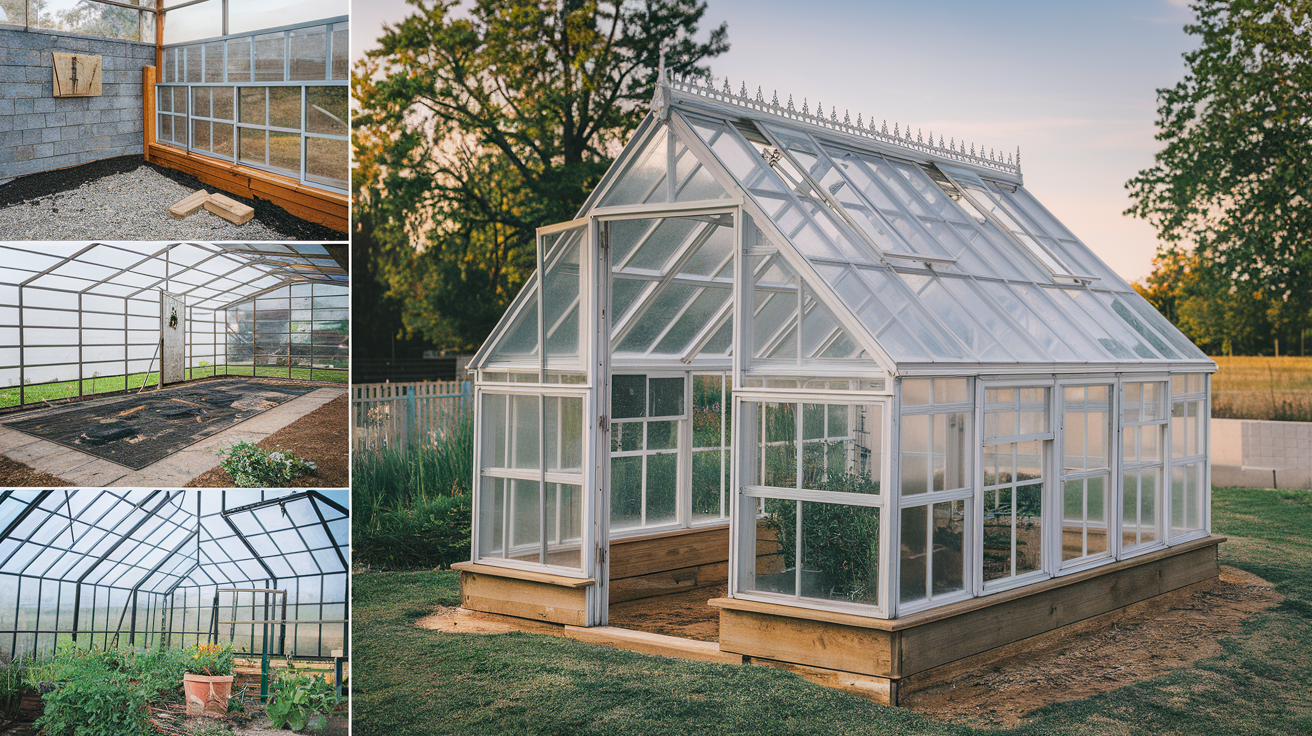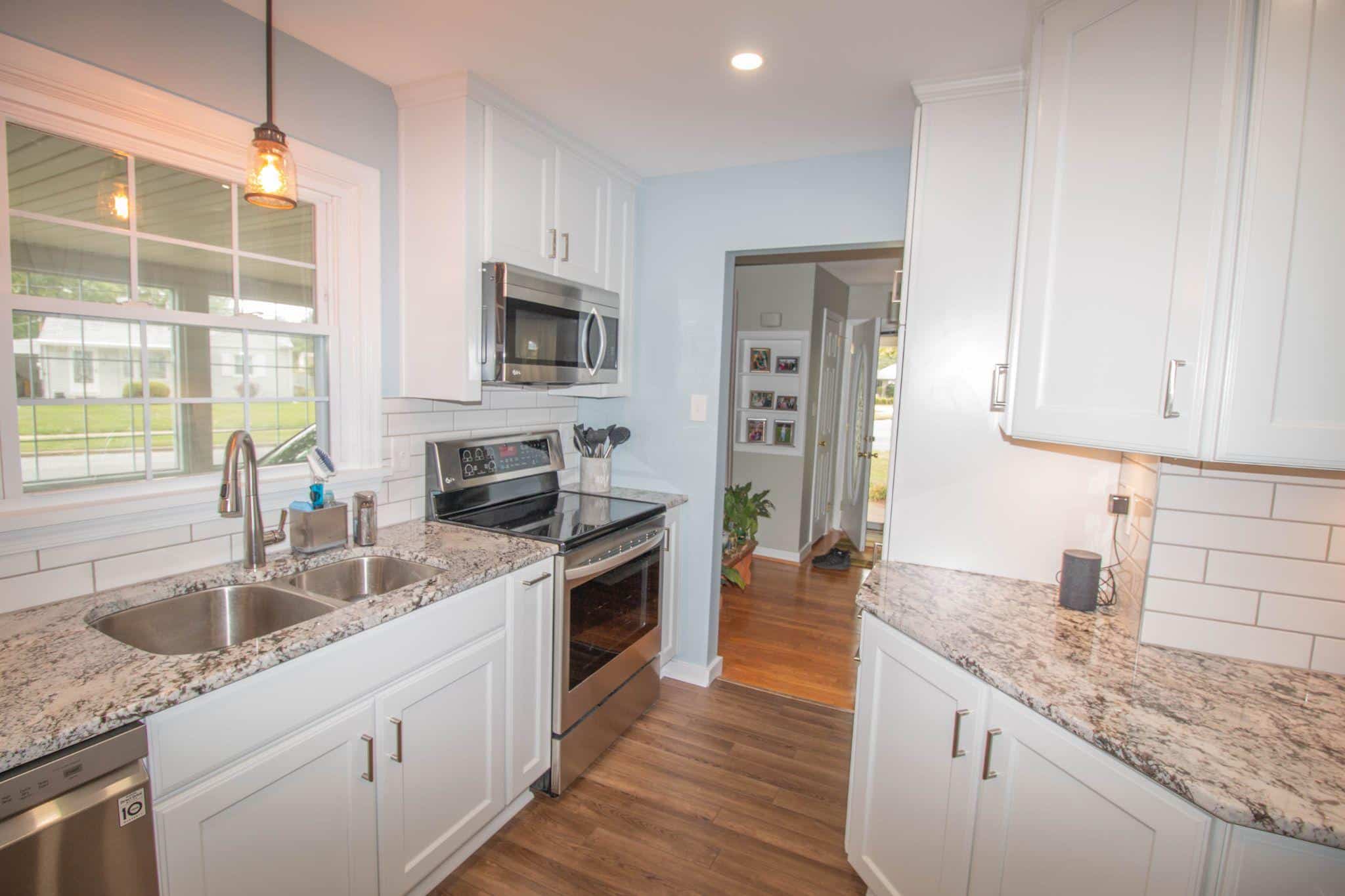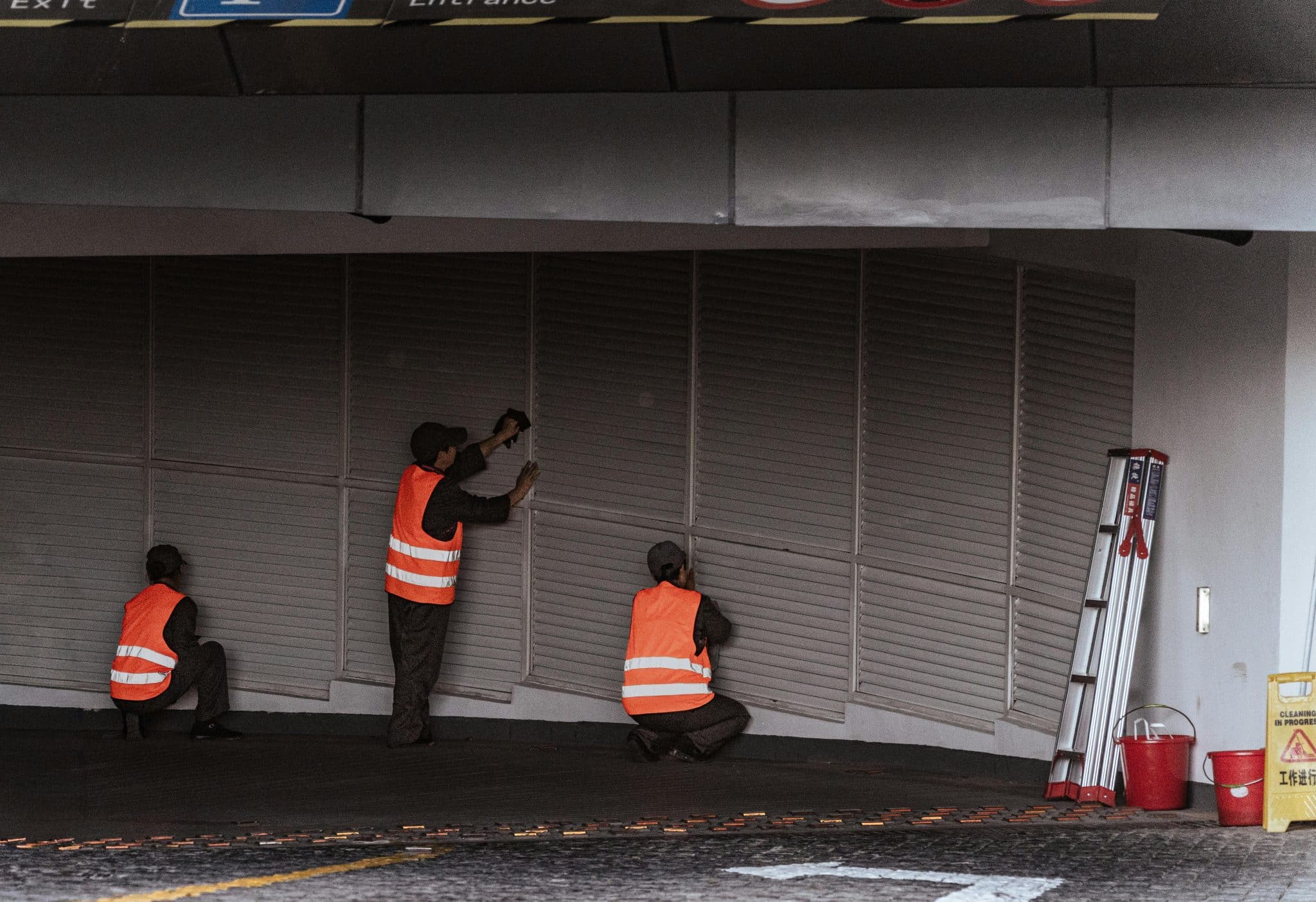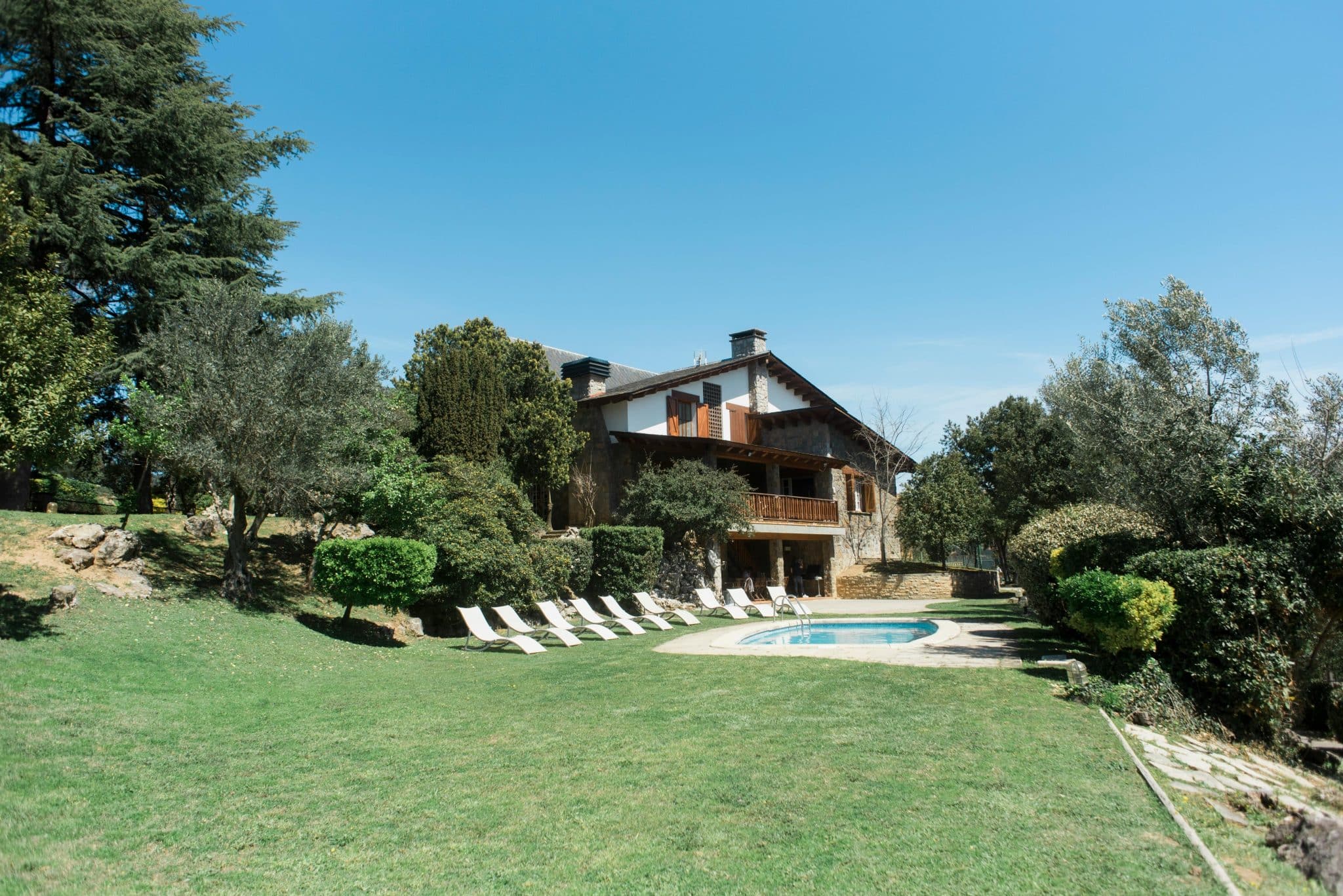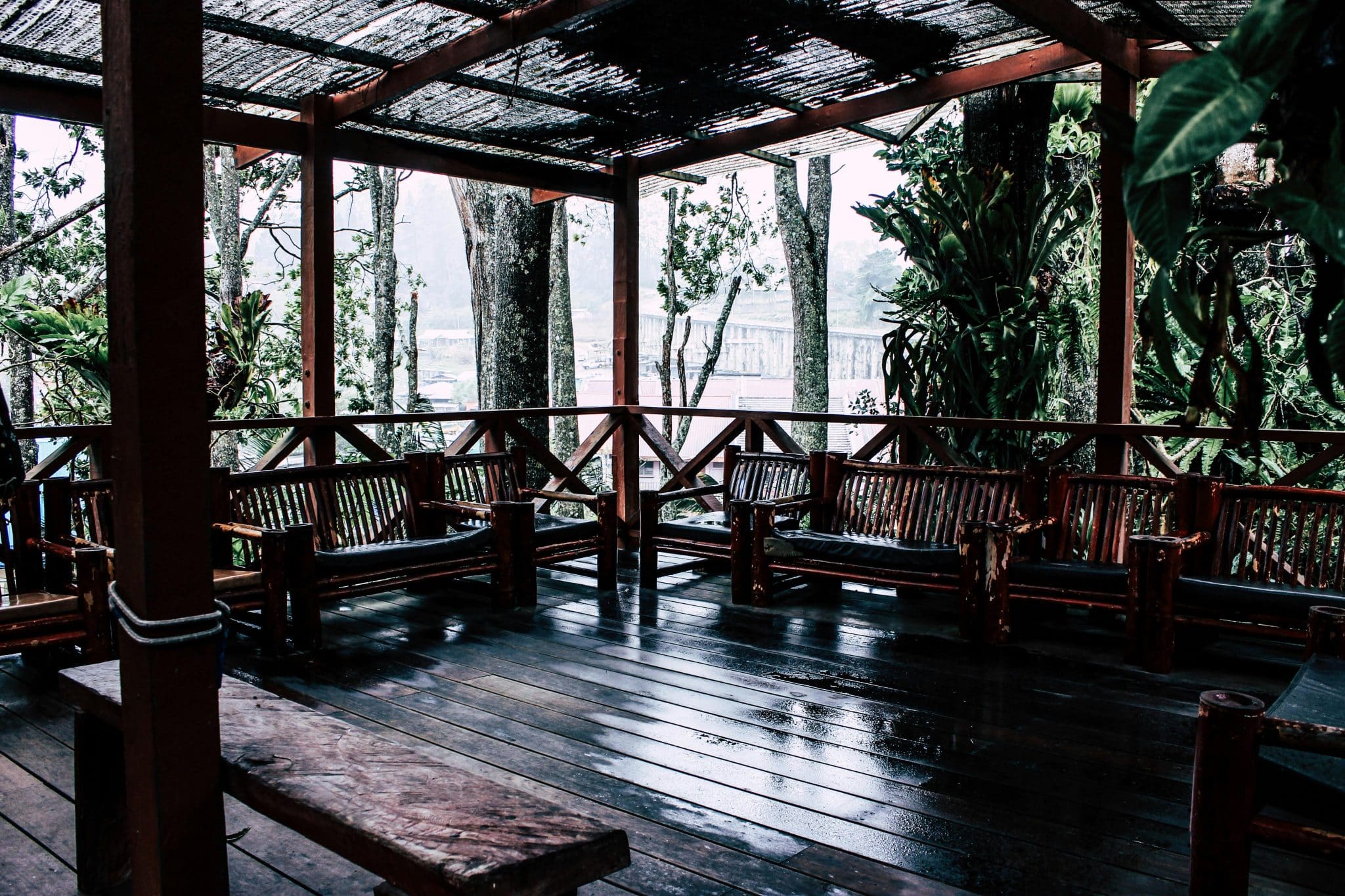Creating your greenhouse using reclaimed windows is an environmentally conscious project and a rewarding way to extend your growing season.
This Step-by-Step guide will walk you through transforming old windows into a functional, beautiful greenhouse space.
This project combines practicality with sustainability, perfect for gardening enthusiasts looking to reuse materials while creating a protective environment for plants.
When completed, your window greenhouse will provide the perfect microclimate for starting seedlings, growing temperature-sensitive plants, and extending your harvest throughout the seasons.
The transparent walls allow sunlight to enter while trapping heat, creating ideal growing conditions even when outside temperatures fluctuate.
Follow along as we detail every step in this satisfying construction project.
Gather These Tools and Materials Before You Begin
Tools
| Tools |
|---|
| Drill with bits |
| Circular saw |
| Level |
| Measuring tape |
| Pencil |
| Razor blade |
Materials
| Materials |
|---|
| Reclaimed windows (various sizes) |
| Cinder blocks |
| 2×6 and 2×4 lumber |
| Concrete mix |
| Carriage bolts, nuts, and washers |
| Wood screws (various lengths) |
| Corner brackets |
| Exterior paint |
| Hinges |
| Silicon caulk |
| Plywood sheets |
| Plastic sheeting for the roof |
| Rubber washers |
| Pallets (for shelving) |
| Shelf boards |
DIY Guide: Creating a Window Greenhouse
Step 1: Plan and Layout
Gather old windows in your workspace and arrange them to form greenhouse walls. Decide window placement and mark your greenhouse footprint clearly. Accurate measurements now prevent problems later.
Step 2: Foundation Preparation
Dig holes about 6 inches deep for cinder blocks at each corner. Level the blocks carefully. Fill the blocks with concrete and insert carriage bolts, aligning with the holes in your lumber frame. Allow the concrete to dry fully.
Step 3: Build the Base Frame
Cut 2×6 lumber to match your measurements. Drill holes to align with carriage bolts and secure with nuts and washers. Reinforce corners with brackets or screws to ensure stability.
Step 4: Frame Walls
Measure and cut 2×4 lumber frames for each wall based on window sizes. Assemble frames on the ground, ensuring each is level and square before securing to the base.
Step 5: Install Windows and Door
Attach wall frames to the base. Insert windows into frames and secure them properly. Install hinges on windows that will open. Hang a door securely and add reclaimed wood flooring at the entrance if desired.
Step 6: Roof and Waterproof
Cut plastic sheets to roof size, and attach them with screws and rubber washers for waterproofing. Close end-wall gaps with plywood. Seal all window edges with silicone to keep out water.
Step 7: Paint and Seal
Paint all wood with weather-resistant exterior paint. White is ideal for enhancing indoor lighting, and a contrasting color is appropriate for doors and accents. Seal seams with silicone caulk to protect against water damage.
Step 8: Interior Shelving
Use pallet wood to build sturdy shelves measured precisely for your space. Arrange shelves to use space effectively, placing taller shelves toward the back and shorter ones toward the front for proper lighting.
Step 9: Final Setup
Finish small details like adding door hardware and thermometers. Clean all glass thoroughly. Arrange shelves efficiently. Set up watering systems or fans if needed. Cover floors with gravel or pavers.
Finally, position plants based on their sunlight and temperature needs, monitoring conditions closely.
Video Tutorial
Check out this YouTube video for a detailed step-by-step Tutorial on Creating a Window Greenhouse
Maintenance and Care for Your Window Greenhouse
1. Regular Cleaning
Clean window glass monthly with mild soap and a soft cloth to maintain brightness. Watch for mold in corners. Clean more often during active growth periods. Check for broken glass while cleaning.
2. Structural Checks
Inspect the greenhouse structure at least twice per year, especially before winter and spring. Look for wood damage, rust on metal parts, and roof wear. Quickly fix any damage to avoid bigger issues.
3. Good Airflow
Manage airflow by opening windows when hot and briefly on mild days in colder weather. Automatic vents help regulate temperature. Proper airflow helps prevent plant diseases and promotes healthy growth.
4. Pest Control
Inspect plants carefully before bringing them into the greenhouse. Seal small openings and use screens to block insects. Introduce helpful insects like ladybugs to manage pests naturally. Regular checks help catch issues early.
5. Seasonal Changes
Adjust greenhouse setup with seasons. For winter, add caulk, insulation, and heaters as needed. Before summer, install shade cloth and increase airflow. Modify planting plans to suit the greenhouse conditions year-round.
Common Mistakes to Skip
| Problem to Avoid | Consequence | Prevention |
|---|---|---|
| Leaving windows on grass | Glass can overheat and break | Store windows upright in the shade until ready to install |
| Skipping pre-drilling | Wood splitting | Always pre-drill holes before inserting screws |
| Inadequate sealing | Water damage and heat loss | Use quality caulk on all seams and joints |
| Poor foundation leveling | Structural instability | Take time to ensure perfect leveling of foundation blocks |
| Insufficient ventilation | Overheating and plant stress | Install multiple opening windows or vents |
| Using the wrong roof material | Leaking or excessive heat | Choose appropriate UV-resistant greenhouse plastic |
| Overcrowding plants | Disease spread and poor growth | Plan adequate spacing between plants and shelving |
| Neglecting paint maintenance | Wood rot and deterioration | Repaint exterior surfaces every 2-3 years |
Budget-Friendly Window Greenhouse
Building an economical window greenhouse doesn’t mean compromising on functionality. With creative repurposing and smart material choices, you can create an effective growing environment at minimal cost:
Money-Saving Construction Methods
- Source windows exclusively from demolition sites, where they may be free for the taking
- Replace expensive greenhouse plastic with heavy-duty clear painter’s drop cloths
- Use pallets not just for shelving but for the entire structural framework
- Substitute commercial potting mix with homemade versions using compost
- Create planting containers from repurposed plastic containers, buckets, and household items
Innovative Low-Cost Solutions
- Cut plastic soda bottles in half to create mini-cloches for seedlings
- Use aluminum foil behind plants to reflect light and reduce the need for supplemental lighting
- Create thermal mass with water-filled black-painted milk jugs instead of expensive heating systems
- Collect rainwater in repurposed food-grade barrels for free irrigation
- Build compost bins directly adjacent to the greenhouse to capture heat during decomposition
Conclusion
Your completed window greenhouse represents the perfect blend of sustainability and functionality. By repurposing old windows into this productive growing space, you’ve created something that serves multiple purposes.
This will extend your growing season, provide a dedicated space for plant propagation, and give new life to materials that might otherwise have been discarded.
The satisfaction of building with your own hands adds immeasurable value to this practical structure. As you tend to your plants in the coming seasons, you’ll appreciate the thoughtful design elements you’ve incorporated, from proper ventilation to strategic shelving.
Your greenhouse will continue to evolve as you discover what works best in your particular climate and for your specific growing needs.
This living laboratory allows for continuous improvement and adaptation, making it not just a construction project but an ongoing journey in sustainable gardening.

